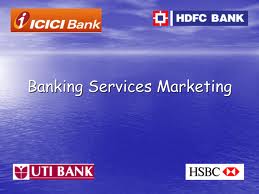Conception about marketing of Banking Services.
Evolution of the Marketing Concept
The Role of marketing in the banking industry continues to change. For many years the primary focus of bank marketing was public relations. Then the focus shifted to advertising and sales promotion. That was followed by focus on the development of a sales culture.
Although all the elements of the marketing concept – customer satisfaction, profit integrated framework and social responsibility – will remain important, customer satisfaction must receive the greatest emphasis in the years ahead.
The chief concerns of most bank executives still focus on legal and regulatory issues, according to most surveys. Community banks are particularly concerned with eliminating barriers that give unfair advantages to financial services competitors, such as credit unions. However, another concern pertains to technology: keeping nonblank competitors out of the payment system.
When this gateway system was first proposed, access to the Internet was very new and few banks had the resources and knowledge to set up their own direct-access lines for customers. Customers have shown a growing interest in online banking services, and banks have responded quickly putting in place proprietary sites on the World Wide Web and offering PC banking.
Within the next five years, 93 percent of community bank executives surveyed say they plan to offer telephone banking, and 79 percent plan to offer PC banking.
When asked which technology holds the most potential for the future, bank executives identified call centers first. As customers continue the transition the transition into a high-tech world in which they want information and answers more quickly and accurately than ever before, call centers offer the ideal bridge. With 24-hour access to either automated information or live operators, customers do everything from check their accounts to apply for a loan. Bank executives also identified PC banking as having the most promise for the future, followed by Interest access and broad function kiosks.
Marketing and Competition
In view of the declining profitability and productivity of the banking sector and extremely low rate of profit percentage, the determination of the financial health of the system requires drastic remedial measures not only to build up investor confidence but also to combat competition from all over. It is time that the pros and cons of the oncoming banking era are properly understood and advantage taken of various opportunities. This will require an efficient marketing approach to bank management in which target markets will be tackled successfully along with effective satisfaction levels and in which the usual basic elements – product, pricing, promotion and distribution will be taken care of in a proper format of an efficiently working marketing organization.
The nationalized banks must face competition from private banks, non-banking financial institutions, foreign banks and others. The competition is in the fields of deposits and credits, foreign trade, consumer credit and miscellaneous banking activities. The competition will benefit customers and force the banking system to raise its productivity, minimize expenses, and remain sensitive to evolving issues. Narasimham Committee Reports while recommending internal autonomy long with compliance with prudential norms suggested rule-based credit policies, fiscal balance and a gradual movement towards liberalization.
To deal with the competition from foreign banks, the Indian banks should go in for diversification and extension of services as well as expansion of products and business. Economic freedom and innovative spirit have contributed greatly to the success of the market-oriented financial sector in the Western countries. Directed credit and investment has done just the opposite. Interventionism is not necessarily bad provided it is associated with a committed leadership. Indian financial sector had for more than four decades, neither full economic freedom nor a well disciplined interventionism so that it cost operational flexibility as well as functional autonomy both of which were concerned with profitability performance and related factors.
Marketing Concepts
Its application to Banking, when we apply marketing to the banking industry, the bank marketing strategy can be said to include the following –
- A very clear definition of target customers.
- The development of a marketing mix to satisfy customers at a profit for the bank.
- Planning for each of the ‘source’ markets & each of the ‘use’ markets (A Bank needs to be doubly market – oriented – it has to attract funds as well as were of funds & services.
- Organisation & Administration.
Bank Marketing
We define bank marketing as follows: “Bank marketing is the aggregate of functions, directed at providing services to satisfy customers’ financial (and other related) needs and wants, more effectively and efficiently that the competitors keeping in view the organizational objectives of the bank”. Bank marketing activity. This aggregate of functions is the sum total of all individual activities consisting of an integrated effort to discover, create, arouse and satisfy customer needs. This means, without exception, that each individual working in the bank is a marketing person who contributes to the total satisfaction to customers and the bank should ultimately develop customer orientation among all the personnel of the bank. Different banks offer different benefits by offering various schemes which can take care of the wants of the customers.
Marketing helps in achieving the organizational objectives of the bank. Indian banks have duel organizational objective – commercial objective to make profit and social objective which is a developmental role, particularly in the rural area.
Marketing concept is essentially about the following few thing which contribute towards banks’ success:
- The bank cannot exist without the customers.
- The purpose of the bank is to create, win, and keep a customer.
- The customer is and should be the central focus of everything the banks does.
- It is also a way of organizing the bank. The starting point for organizational design should be the customer and the bank should ensure that the services are performed and delivered in the most effective way. Service facilities also should be designed for customers’ convenience.
- Ultimate aim of a bank is to deliver total satisfaction to the customer.
- Customer satisfaction is affected by the performance of all the personal of the bank.
All the techniques and strategies of marketing are used so that ultimately they induce the people to do business with a particular bank. Marketing is an organizational philosophy. This philosophy demands the satisfaction of customers needs as the pre-requisite for the existence and survival of the bank. The first and most important step in applying the marketing concept is to have a whole hearted commitment to customer orientation by all the employees. Marketing is an attitude of mind. This means that the central focus of all the activities of a bank is customer. Marketing is not a separate function for banks. The marketing function in Indian Bank is required to be integrated with operation.
Marketing is much more than just advertising and promotion; it is a basic part of total business operation. What is required for the bank is the market orientation and customer consciousness among all the personal of the bank. For developing marketing philosophy and marketing culture, a bank may require a marketing coordinator or integrator at the head office reporting directly to the Chief Executive for effective coordination of different functions, such as marketed research, training, public relations, advertising, and business development, to ensure customer satisfaction. The Executive Director is the most suitable person to do this coordination work effectively in the Indian public sector banks, though ultimately the Chief Executive is responsible for the total marketing function. Hence, the total marketing function involves the following:
a) Market research
identification of customer’s financial needs and wants and forecasting and researching future financial market needs and competitors’ activities.
b) Product Development
appropriate products to meet consumers’ financial needs.
c) Pricing of the service
promotional activities and distribution system in accordance with the guidelines and rules of the Reserve Bank of India and at the same time looking for opportunities to satisfy the customers better.
d) Developing market
marketing culture – among all the customer-consciousness ‘Personnel’ of the bank through training.
Thus, it is important to recognize the fundamentally different functions that bank marketing has to perform. Since the banks have to attract deposits and attract users of funds and other services, marketing problems are more complex in banks than in other commercial concerns.
Increasing Importance of Marketing in Banking Industry
The various other factors which have led to the increasing importance of marketing in the banking industry are categorized as follows:
Government Initiatives
The Bangladeshi economy embarked on the process of economic reform and various policy measures initiated by the government resulted in the increasing competition in the banking industry, thereby highlighting the importance of effective marketing. The standing Committee Report evidence of the Government’s desire to ‘re-regulate’ the banking industry so as to encourage efficiency through competition. The Government initiatives include:
Deregulation of Interest Rates
The bank may reduce their Minimum Lending Rates so as to attract customers (individual and corporate). Such reduction in lending rates reduce the spread between the deposit rates and lending rates, i.e. the banks margins would decline and they would have to increase their volumes or provide attractive services so as to maintain profits. This calls for bank marketing.
Increasing Emphasis on Bank Profitability:
With the Bangladesh Bank Report, banks have been directed to improve their efficiency, productivity and profitability. Banks are required to be self-sufficient. In fact, the report has adopted the BIS standards of capital adequacy (though in a phased manner).
Foreign Banks
Foreign banks offer stiff competition to the Bangladeshi Banks and with their superior services and technologies offer them a competitive advantage. Thus indigenous Banks have to effectively apply marketing concepts to attract customers.
Entry of New Private Banks
In the early ‘90s new competition emerged in the form of new Private Banks, who brought along with them a high technology-based banking matching with International Standards and have made a significant dent in the banking business by capturing substantial share in the profits of the banking industry.
















